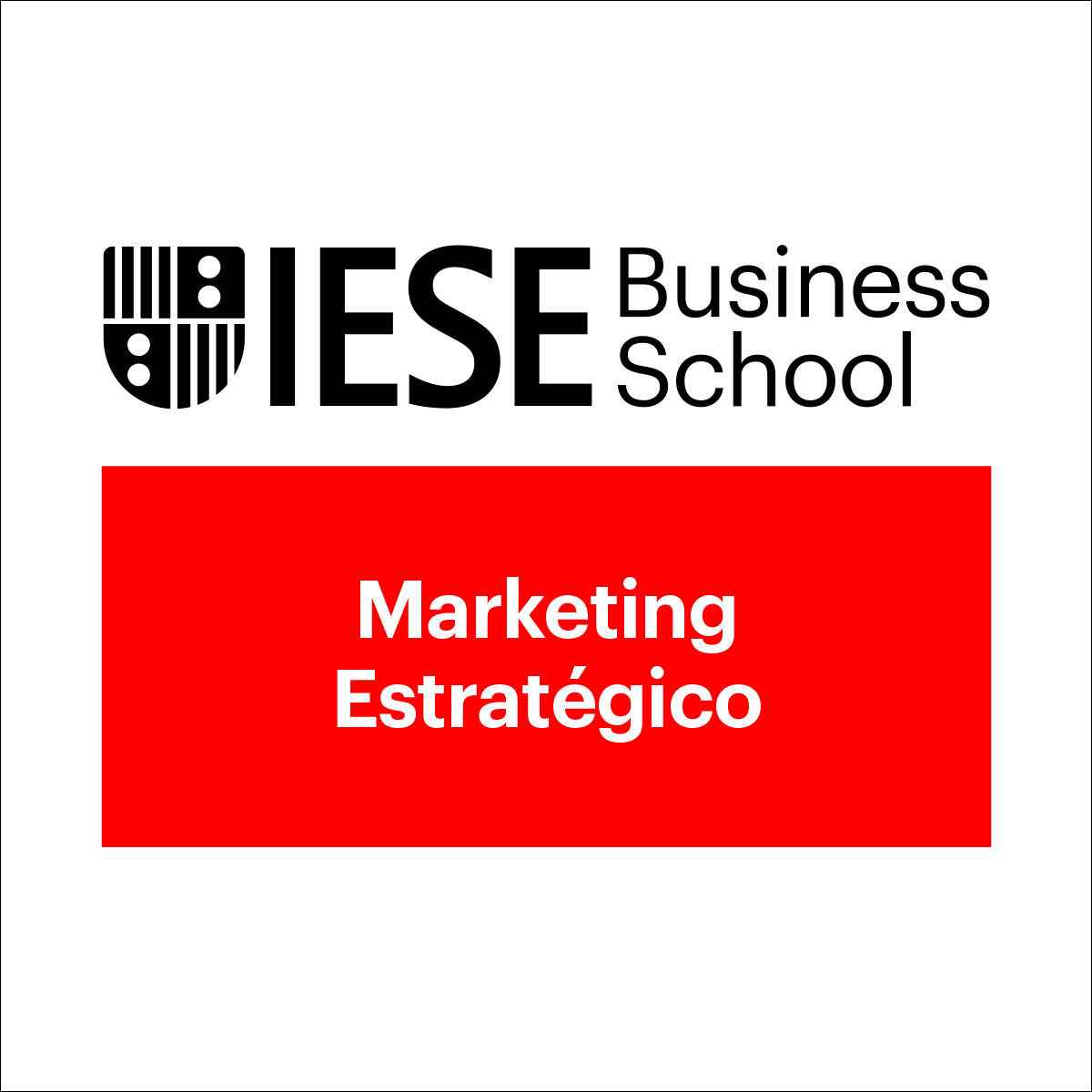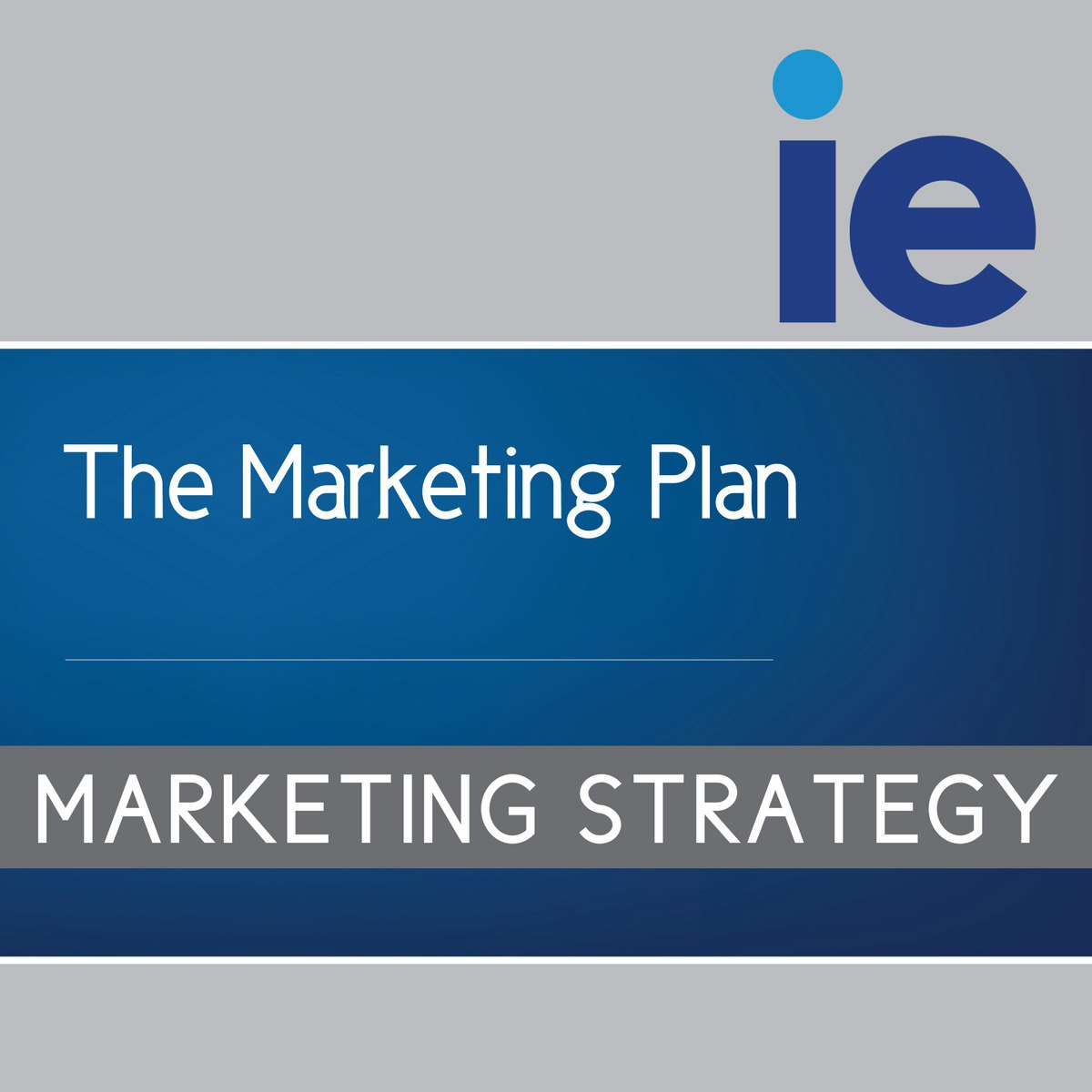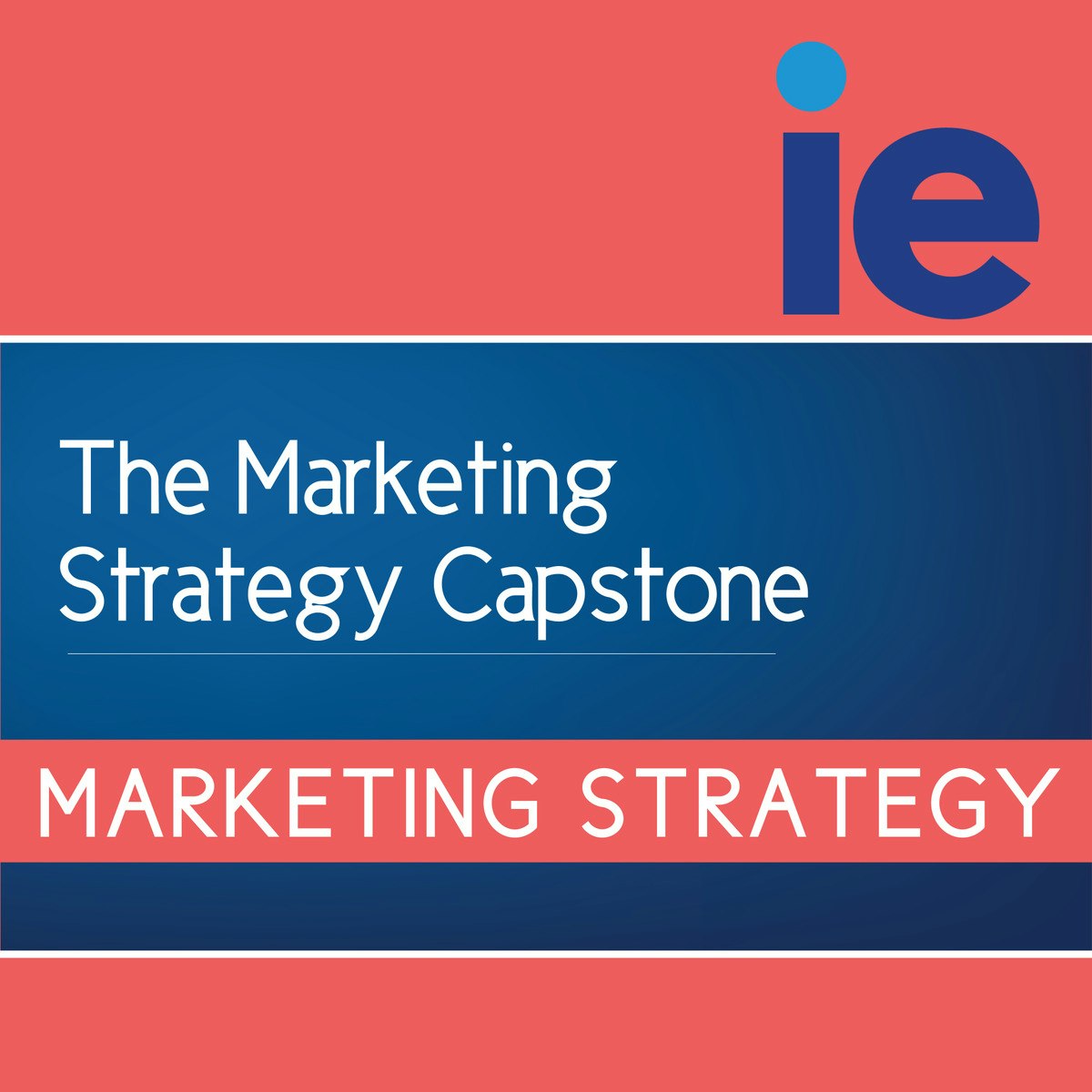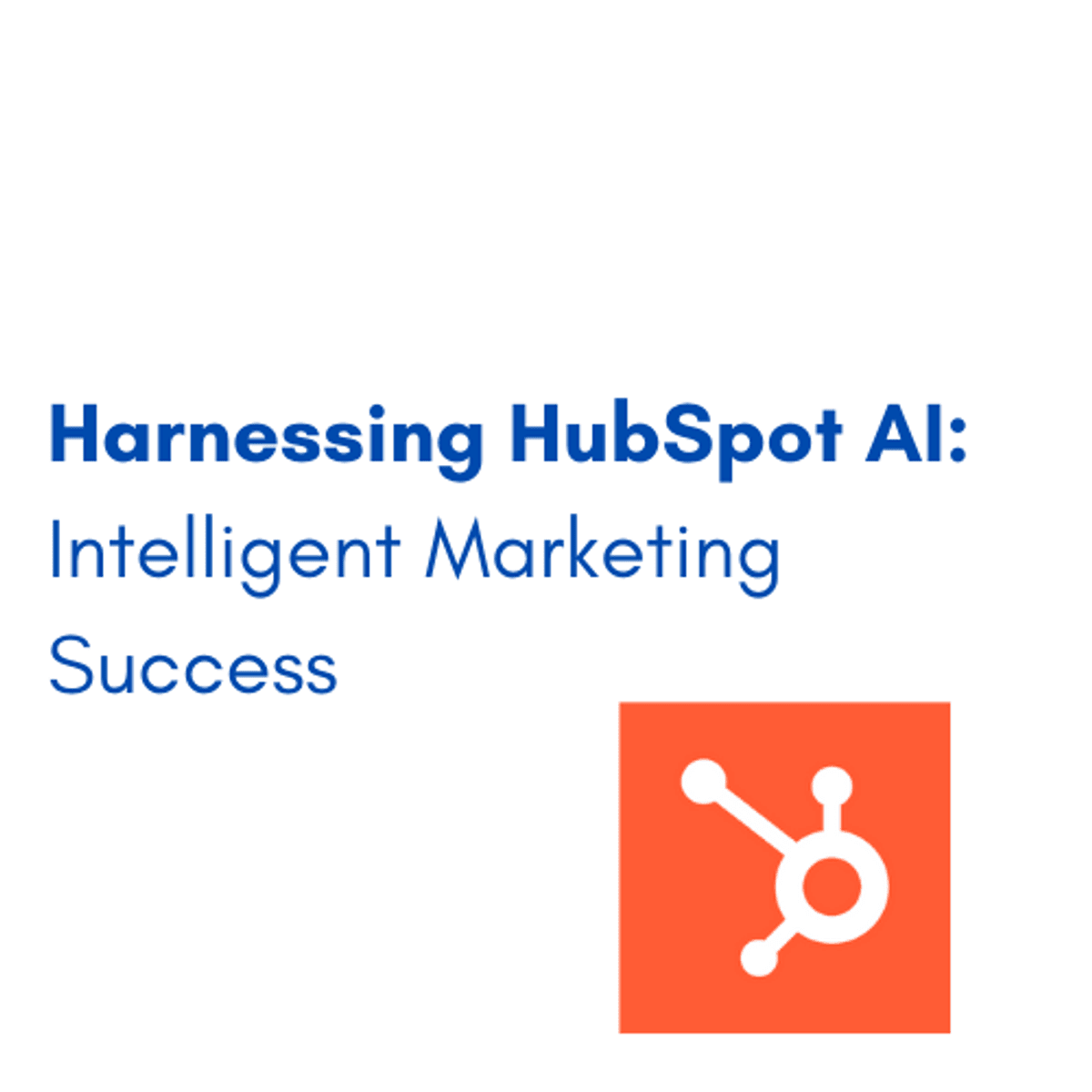Marketing Strategy
Embarking on the Journey of Marketing Strategy
Marketing strategy is the comprehensive plan that businesses devise to reach potential customers and convert them into actual buyers of their products or services. It's about understanding the bigger picture: where a company wants to go and how its marketing efforts will help it get there. This involves making deliberate choices about who to target, what message to convey, and which channels to use to deliver that message effectively. At its core, a marketing strategy provides the roadmap for all marketing activities, ensuring they are aligned with the overall business objectives and work together cohesively.
Working in marketing strategy can be a dynamic and intellectually stimulating endeavor. One of the most engaging aspects is the constant need to understand human behavior – what motivates people, what their needs are, and how they make decisions. This often involves a fascinating blend of psychology, sociology, and data analysis. Another exciting dimension is the creative problem-solving required. Strategists are constantly challenged to find innovative ways to connect with audiences, differentiate their offerings in crowded marketplaces, and adapt to ever-changing consumer trends and technological advancements. The thrill of seeing a well-crafted strategy come to life and achieve tangible business results can be incredibly rewarding.
Understanding the Foundations of Marketing Strategy
To truly grasp marketing strategy, it's helpful to explore its fundamental aspects. This includes understanding its definition, how it has evolved, its crucial role in today's business world, and the common language used by professionals in the field. This foundational knowledge will serve as a sturdy platform for anyone looking to delve deeper into this dynamic area.
Defining the Discipline: What Exactly is Marketing Strategy?
At a high level, a marketing strategy is a business's overall game plan for reaching prospective consumers and turning them into customers of their products or services. It's not just about individual advertisements or social media posts; rather, it's the overarching approach that guides these tactical decisions. The primary objective of any marketing strategy is typically to drive sales and increase profitability, but it also encompasses goals like building brand awareness, fostering customer loyalty, and establishing a strong market position.
A comprehensive marketing strategy integrates various elements, including the company's value proposition (what unique benefit it offers to customers), key brand messaging (the core ideas and values it wants to communicate), and detailed information about its target customer demographics. It also traditionally considers the "four Ps of marketing": Product (what is being sold), Price (how much it costs), Place (where it's sold), and Promotion (how it's communicated to potential buyers). These components work in concert to create a unified and effective approach to the market.
For those new to the concept, imagine a sports team. The overall marketing strategy is like the team's season-long plan to win the championship. It involves understanding their strengths, the weaknesses of their opponents (competitors), the rules of the game (market conditions), and the ultimate goal (business objectives). Individual marketing campaigns and tactics are like specific plays or game plans designed to win individual matches, all contributing to the larger strategic objective.
A Look Back: The Evolution of Marketing Approaches
The concept of marketing strategy, while seemingly modern, has roots that stretch back through centuries of commerce. Early forms were often informal and based on direct relationships between sellers and buyers in local marketplaces. However, the Industrial Revolution marked a significant turning point, enabling mass production and requiring broader methods to reach dispersed customers. This era saw the rise of print advertising in newspapers and magazines as a primary strategic tool.
The 20th century brought further transformations with the advent of new media like radio and television. These platforms allowed for mass-market appeals and the development of branding as a strategic imperative. Marketing thought also matured, with academics and practitioners beginning to formalize concepts like market segmentation and consumer behavior analysis. The post-World War II economic boom further fueled sophisticated marketing strategies as companies competed for the attention of an increasingly affluent consumer base.
The late 20th and early 21st centuries have been defined by the digital revolution. The internet, mobile devices, and social media have fundamentally altered how businesses connect with customers. This has led to the rise of digital marketing strategies, data analytics, personalization, and a more interactive, two-way communication model between brands and consumers. Today, marketing strategy is a highly dynamic field, continuously adapting to technological advancements and evolving societal trends.
The Engine of Growth: Marketing Strategy's Role in Modern Business
In the contemporary business ecosystem, marketing strategy is not merely a departmental function but a critical driver of overall business success and growth. It serves as the crucial link between a company's products or services and the needs and desires of its target customers. A well-defined marketing strategy helps a business understand its market, identify profitable opportunities, and allocate resources effectively to achieve its objectives.
One of its primary roles is to create and communicate a compelling value proposition. In a world saturated with choices, a strong marketing strategy articulates why a customer should choose one company's offering over another's. This involves not only highlighting product features but also building a brand identity that resonates with the target audience and fosters trust and loyalty. It guides decisions on product development, pricing, distribution, and promotional activities, ensuring they are all aligned to deliver superior customer value.
Furthermore, marketing strategy plays a pivotal role in navigating the complexities of the modern marketplace. It helps businesses anticipate and respond to competitive threats, adapt to changing consumer preferences, and leverage new technologies. By providing a framework for data collection and analysis, it enables businesses to make informed decisions, measure performance, and continuously optimize their marketing efforts for better results. Essentially, it is the strategic compass that directs a company's efforts to attract, engage, and retain customers in a sustainable and profitable manner.
Speaking the Lingo: Essential Marketing Strategy Terms
Understanding key terminology is fundamental to navigating the world of marketing strategy. One of the most basic concepts is market segmentation, which is the process of dividing a broad consumer or business market, normally consisting of existing and potential customers, into sub-groups of consumers (known as segments) based on some type of shared characteristics. These characteristics can be demographic (age, gender, income), geographic (location), psychographic (lifestyle, values), or behavioral (purchasing habits, brand loyalty).
Once segments are identified, targeting comes into play. This involves selecting one or more of these segments to enter. Businesses choose target markets based on factors like segment size and growth potential, structural attractiveness (e.g., level of competition), and how well the segment aligns with the company's objectives and resources. The goal is to focus marketing efforts on the groups most likely to respond positively to the company's offerings.
Positioning refers to the act of designing the company's offering and image to occupy a distinctive place in the minds of the target market. It’s about how you want your target audience to perceive your product or service relative to competitors. Effective positioning creates a clear and unique image of the brand or product in the customer's mind, highlighting its key benefits and differentiators. This is often articulated through a positioning statement, which is a concise description of the target market and the unique value the product or service provides.
Other important terms include value proposition, which is the unique benefit a company promises to deliver to its customers should they choose to buy their product; brand equity, which refers to the value premium that a company generates from a product with a recognizable name when compared to a generic equivalent; and Return on Investment (ROI), a performance measure used to evaluate the efficiency or profitability of an investment or compare the efficiency of a number of different investments. Familiarity with these and other core terms provides a solid foundation for understanding and discussing marketing strategy concepts.
Core Components of a Marketing Strategy
A robust marketing strategy is built upon several critical components that work together to achieve business objectives. These elements provide the structure and direction for all marketing activities. Understanding these core components is essential for both students learning about the field and practitioners aiming to develop effective strategies in the real world.
Knowing Your Playground: Market Research and Analysis
Market research and analysis form the bedrock of any effective marketing strategy. This process involves systematically gathering, recording, and analyzing data about customers, competitors, and the market as a whole. Its primary purpose is to provide insights that inform decision-making and reduce uncertainty when developing marketing plans. Without a solid understanding of the market landscape, even the most creative marketing efforts can miss the mark.
The scope of market research is broad. It can involve investigating market size and trends, understanding customer needs and preferences, assessing brand perception, and evaluating the effectiveness of past marketing campaigns. It also includes competitive analysis, which focuses on identifying competitors, understanding their strengths and weaknesses, and anticipating their strategies. This comprehensive view helps businesses identify opportunities, mitigate risks, and make informed choices about where to focus their efforts.
Various methods are employed in market research, broadly categorized into primary and secondary research. Primary research involves collecting new data directly from sources, such as through surveys, interviews, focus groups, or observation. Secondary research, on the other hand, involves analyzing existing data that has already been collected by others, such as industry reports, government statistics, or academic studies. Both types of research are valuable and often used in conjunction to paint a complete picture of the market. The insights gained from rigorous market research and analysis empower businesses to develop strategies that are grounded in reality and have a higher likelihood of success.
These courses provide a strong introduction to market research and its application in building strategy.
For further reading on understanding consumer behavior, which is crucial for market research, consider these books.
Pinpointing Your People: Target Audience Identification
Identifying and understanding the target audience is a cornerstone of effective marketing strategy. A target audience is a specific group of consumers most likely to be interested in your product or service, and therefore, the group of people who should see your advertising campaigns. Defining this group with precision allows businesses to tailor their marketing messages, choose the most effective channels, and develop products or services that genuinely meet their needs and desires.
The process often begins with market segmentation, dividing the broader market into smaller, more manageable groups based on shared characteristics such as demographics (age, gender, income, education), geographics (location), psychographics (lifestyle, values, interests), and behavior (purchasing habits, brand loyalty, product usage). For example, a company selling high-performance athletic gear might target young adults aged 18-35 who are actively involved in sports and value quality and innovation. This is far more effective than attempting to appeal to everyone.
Once potential segments are identified, businesses evaluate their attractiveness and select one or more to target. This selection considers factors like the segment's size and growth potential, the level of competition for that segment, and how well the segment aligns with the company's resources and objectives. Developing detailed buyer personas—semi-fictional representations of your ideal customers based on research and data—can further refine understanding and help humanize the target audience, making it easier to empathize with their motivations and challenges. Ultimately, a clear focus on a well-defined target audience ensures that marketing efforts are more relevant, efficient, and impactful.
These courses can help you understand how to identify and analyze your target audience.
Standing Out from the Crowd: Competitive Positioning
Competitive positioning is the strategic process of establishing a unique and favorable image of a product or brand in the minds of the target audience, relative to competitors. It's about clearly articulating what makes your offering different and better, and why customers should choose you over other available options. In a crowded marketplace, effective positioning is crucial for cutting through the noise and capturing customer attention and loyalty.
The first step in developing a positioning strategy is a thorough competitive analysis. This involves identifying key competitors, understanding their strengths and weaknesses, their marketing strategies, and how they are perceived by customers. This analysis helps uncover opportunities for differentiation—areas where your product or brand can offer unique value that competitors do not, or cannot, effectively match.
Once potential differentiators are identified, the business selects the most compelling ones to form the basis of its positioning strategy. These differentiators could be based on product features, quality, price, customer service, innovation, brand image, or a combination of these. The chosen position must be credible, relevant to the target audience, and sustainable over time. This positioning is then consistently communicated across all marketing channels and customer touchpoints to reinforce the desired perception. A strong competitive position gives a brand a distinct advantage and helps it attract and retain its target customers.
The following courses provide insights into defining and establishing your market position.
Understanding how to position your brand effectively is a key theme in these classic marketing texts.
Smart Spending: Budget Allocation and ROI Measurement
Budget allocation and Return on Investment (ROI) measurement are critical financial aspects of marketing strategy, ensuring that resources are used efficiently and that marketing efforts contribute demonstrably to business goals. Marketing budget allocation involves deciding how much to spend on marketing overall and how to distribute those funds across various activities, channels, and campaigns. This is a challenging task that requires careful consideration of strategic priorities, market opportunities, and potential returns.
There are several approaches to setting a marketing budget, including percentage of sales, competitive parity (matching competitor spending), objective-and-task (basing the budget on the cost of activities needed to achieve specific objectives), and affordability. Each method has its pros and cons, and the most appropriate approach often depends on the company's size, industry, and strategic goals. Once the overall budget is set, it needs to be allocated to different marketing mix elements (e.g., advertising, public relations, digital marketing, content creation) and specific campaigns or initiatives.
Measuring ROI is essential for evaluating the effectiveness of marketing expenditures and justifying future investments. ROI is typically calculated as (Net Profit from Marketing Investment - Cost of Marketing Investment) / Cost of Marketing Investment. However, attributing profit directly to specific marketing activities can be complex, especially in multi-channel campaigns. Therefore, marketers often use a variety of Key Performance Indicators (KPIs) to track progress and assess performance. These KPIs might include website traffic, conversion rates, lead generation, customer acquisition cost (CAC), customer lifetime value (CLV), social media engagement, and brand awareness metrics. Regularly monitoring these metrics and calculating ROI allows businesses to optimize their spending, shift resources to more effective activities, and demonstrate the value of marketing to the organization.
This course delves into the creation of a marketing plan, which inherently includes budgeting and an expectation of return.
Marketing Strategy Frameworks
Marketing strategy frameworks are conceptual structures that help marketers organize their thinking, analyze situations, and develop coherent plans. These established models provide a systematic approach to understanding complex market dynamics and making strategic decisions. For those delving into advanced study or research in marketing, a firm grasp of these frameworks is indispensable, offering lenses through which to compare theoretical underpinnings with real-world applications.
Internal and External Audits: SWOT Analysis
A SWOT analysis is a foundational strategic planning tool used to evaluate an organization's Strengths, Weaknesses, Opportunities, and Threats. It provides a structured way to assess both internal factors (Strengths and Weaknesses) that are within the organization's control, and external factors (Opportunities and Threats) which exist in the broader market environment. This framework facilitates a realistic, data-driven examination of a company's current position and potential future.
Strengths refer to internal attributes and resources that give the company a competitive advantage. Examples include a strong brand reputation, proprietary technology, skilled workforce, or efficient processes. Weaknesses are internal factors that place the company at a disadvantage relative to competitors, such as outdated technology, a poor brand image, lack of financial resources, or inefficient operations. Identifying these internal aspects honestly is crucial for leveraging capabilities and addressing shortcomings.
Opportunities are external factors that the company could exploit to its advantage. These might include emerging customer needs, new market segments, technological advancements, favorable regulatory changes, or weaknesses in competitor offerings. Threats are external factors that could negatively impact the business, such as new competitors entering the market, changing customer preferences, economic downturns, unfavorable regulatory shifts, or disruptive technologies. By systematically analyzing these four dimensions, a SWOT analysis helps organizations develop strategies that capitalize on strengths, mitigate weaknesses, seize opportunities, and defend against threats.
These courses can offer a practical understanding of applying SWOT and other analytical tools.
For a deeper dive into strategic thinking that complements SWOT analysis, this book is highly recommended.
Analyzing Industry Structure: Porter’s Five Forces
Developed by Michael E. Porter, the Five Forces framework is a powerful tool for analyzing the competitive structure of an industry and understanding its profitability potential. It helps businesses assess the intensity of competition and identify the key factors that shape industry dynamics. The five forces are: Threat of New Entrants, Bargaining Power of Buyers, Bargaining Power of Suppliers, Threat of Substitute Products or Services, and Intensity of Rivalry among Existing Competitors.
The Threat of New Entrants considers how easy or difficult it is for new companies to enter the industry. High barriers to entry, such as significant capital requirements, strong brand loyalty, proprietary technology, or government regulations, reduce this threat. The Bargaining Power of Buyers (customers) refers to their ability to put pressure on companies to lower prices or improve quality. Buyer power is high when there are many alternative suppliers, switching costs are low, or buyers are price-sensitive. Conversely, the Bargaining Power of Suppliers is their ability to raise prices or reduce the quality of goods and services. Supplier power is high when there are few suppliers, the input is critical, or switching suppliers is costly.
The Threat of Substitute Products or Services refers to the likelihood of customers finding different ways to meet their needs. The availability of close substitutes can limit an industry's pricing power and profitability. Finally, the Intensity of Rivalry among Existing Competitors examines the level of competition between current players in the industry. High rivalry, characterized by price wars, aggressive advertising, or frequent product introductions, can erode industry profits. By analyzing these five forces, businesses can better understand their industry's attractiveness, identify strategic opportunities and threats, and develop strategies to improve their competitive position.
While no specific course is listed solely for Porter's Five Forces, strategic management courses often cover this framework in detail.
Plotting Growth Paths: The Ansoff Matrix
The Ansoff Matrix, also known as the Product/Market Expansion Grid, is a strategic tool that helps businesses identify and evaluate growth opportunities. Developed by H. Igor Ansoff, the matrix presents four growth strategies based on whether a company is targeting existing or new markets with existing or new products. It provides a simple yet powerful framework for thinking about how to expand the business and the level of risk associated with each approach.
The four strategies are: 1. Market Penetration: This strategy involves increasing sales of existing products in existing markets. This might be achieved by gaining market share from competitors, encouraging existing customers to buy more, or attracting new customers within the current market. This is generally considered the least risky strategy as it leverages familiar products and markets. 2. Market Development: This strategy focuses on selling existing products to new markets. New markets could be different customer segments, new geographic regions (domestic or international), or new distribution channels. This involves a moderate level of risk due to the unfamiliarity of the new market.
3. Product Development: Here, the focus is on introducing new products to existing markets. This could involve developing new product features, creating new product lines, or acquiring other companies' products to sell to the established customer base. This also carries a moderate level of risk associated with new product development and acceptance. 4. Diversification: This is typically the riskiest strategy as it involves entering new markets with new products. Diversification can be related (leveraging existing capabilities in new areas) or unrelated (entering entirely new industries). While potentially offering significant growth, it also comes with the highest level of uncertainty. The Ansoff Matrix encourages businesses to systematically consider these options and choose the growth path that best aligns with their capabilities and risk appetite.
Courses focusing on overall marketing strategy or business development would likely explore the Ansoff Matrix.
Visualizing Engagement: Customer Journey Mapping
Customer Journey Mapping is a powerful visualization tool that helps businesses understand and improve the customer experience. It involves creating a visual representation of all the interactions a customer has with a company, its products, or its services, from initial awareness through to post-purchase engagement and advocacy. By stepping into the customer's shoes, businesses can gain deep insights into their needs, motivations, pain points, and emotions at each stage of their journey.
A typical customer journey map outlines several key stages, such as Awareness (when the customer first becomes aware of a need or the company), Consideration (when they research options), Decision/Purchase (when they choose a product or service), Retention/Service (their experience using the product and interacting with customer support), and Advocacy (when they become loyal promoters of the brand). For each stage, the map details customer actions, thoughts, feelings, and touchpoints (the specific points of interaction with the company, like its website, social media, sales staff, or customer service channels).
The benefits of customer journey mapping are numerous. It helps identify areas of friction or dissatisfaction in the customer experience, allowing businesses to make targeted improvements. It fosters a customer-centric culture by aligning different departments (marketing, sales, product development, customer service) around a shared understanding of the customer. Furthermore, it can uncover opportunities for innovation, enhanced personalization, and more effective marketing communications, ultimately leading to increased customer satisfaction, loyalty, and business growth.
Understanding the customer journey is vital for modern marketing, and these courses offer relevant insights.
Digital Marketing Strategy
In today's interconnected world, a digital marketing strategy is no longer optional—it's an essential component of any comprehensive marketing plan. This area focuses on leveraging digital channels to reach and engage customers, build brand awareness, and drive business growth. For industry practitioners and those considering a career pivot into marketing, understanding digital marketing strategy is crucial for staying relevant and effective. Explore the vast world of Digital Marketing courses on OpenCourser to get started.
Getting Found Online: SEO/SEM Integration
Search Engine Optimization (SEO) and Search Engine Marketing (SEM) are two critical pillars of a digital marketing strategy aimed at increasing a business's visibility on search engine results pages (SERPs) like Google. While often discussed together, they represent distinct but complementary approaches. SEO focuses on optimizing a website and its content to rank higher in organic (non-paid) search results. This involves techniques like keyword research, on-page optimization (e.g., improving titles, meta descriptions, content quality), off-page optimization (e.g., building backlinks), and technical SEO (e.g., improving site speed and mobile-friendliness).
SEM, on the other hand, is a broader term that encompasses paid search advertising, most notably Pay-Per-Click (PPC) campaigns. With SEM, businesses bid on keywords to have their ads appear in the sponsored sections of SERPs. This allows for more immediate visibility and targeted reach based on user search queries, demographics, and other factors. Google Ads is the most prominent platform for SEM.
Integrating SEO and SEM efforts can create a powerful synergy. Insights from SEM campaigns (e.g., high-performing keywords, ad copy effectiveness) can inform SEO strategies, and strong organic rankings from SEO can improve the Quality Score of PPC ads, potentially lowering costs. Both SEO and SEM aim to drive qualified traffic to a website, and a holistic strategy that leverages the strengths of each can lead to significantly better online visibility, lead generation, and ultimately, sales.
These courses provide a good starting point for understanding how to get found online.
For those looking to understand the broader digital landscape, this book can be very helpful.
Engaging Communities: Social Media Tactics
Social media has evolved from a mere networking tool into a powerful platform for marketing strategy. Effective social media tactics involve more than just posting content; they require a strategic approach to building communities, engaging audiences, and achieving specific marketing objectives. This often starts with selecting the right platforms where the target audience is most active, whether it's Facebook, Instagram, X (formerly Twitter), LinkedIn, TikTok, Pinterest, or others.
Content is king in social media. Successful tactics involve creating and curating valuable, relevant, and engaging content tailored to each platform's unique format and audience expectations. This can include a mix of text posts, images, videos, stories, live streams, and interactive content like polls and quizzes. Consistency in posting and brand voice is also important for building recognition and trust. Many businesses leverage social media management tools to schedule posts, monitor engagement, and analyze performance.
Beyond content creation, key social media tactics include active community management (responding to comments and messages, fostering discussions), influencer marketing (collaborating with individuals who have a significant and engaged following), paid social media advertising (to reach a wider or more targeted audience), and social listening (monitoring conversations about the brand, industry, and competitors to gain insights and identify opportunities). Measuring performance through metrics like reach, engagement rate, click-through rates, and conversions is crucial for understanding what works and refining the strategy over time.
These courses offer insights into leveraging social media for marketing purposes.
Informed Choices: Data-Driven Decision-Making in Digital Marketing
Data-driven decision-making is at the heart of effective digital marketing strategy. The digital landscape generates vast amounts of data, and the ability to collect, analyze, and interpret this data provides a significant competitive advantage. Instead of relying on gut feelings or assumptions, marketers can use data to understand customer behavior, measure campaign performance, identify trends, and optimize strategies for better results.
Key data sources in digital marketing include website analytics (e.g., Google Analytics), social media analytics, email marketing platform data, CRM data, and advertising platform reports. These sources provide insights into metrics such as website traffic, bounce rates, conversion rates, click-through rates, engagement levels, customer acquisition costs, and customer lifetime value. Analyzing this data helps marketers understand what's working, what's not, and why.
For example, website analytics can reveal which marketing channels are driving the most valuable traffic, which content resonates most with visitors, and where users might be encountering obstacles in the conversion funnel. A/B testing, a common data-driven technique, involves comparing two versions of a webpage, email, or ad to see which performs better, allowing for continuous optimization. By embracing a data-driven approach, marketers can make more informed decisions, allocate budgets more effectively, personalize customer experiences, and ultimately achieve a higher return on their marketing investments.
Consider these courses to learn more about leveraging data in your marketing efforts.
A Unified Front: Omnichannel Approaches
An omnichannel approach in marketing strategy aims to provide customers with a seamless and integrated brand experience across all channels and touchpoints, whether online or offline. This contrasts with a multichannel approach, where a company might use multiple channels that operate independently. In an omnichannel strategy, these channels are interconnected, allowing customers to move fluidly between them without losing context or experiencing disjointed interactions.
The foundation of an omnichannel strategy is a deep understanding of the customer journey and the various ways customers interact with the brand. For example, a customer might discover a product through a social media ad, research it on the company's website, visit a physical store to see it, and then make the purchase via a mobile app. An omnichannel approach ensures that each of these interactions is consistent in terms of branding, messaging, and information, and that data from one channel informs the experience on others.
Key elements of a successful omnichannel strategy include a centralized customer data platform (to provide a unified view of each customer), consistent branding and messaging across all channels, and technology that enables seamless transitions (e.g., allowing a customer to start a shopping cart online and complete it in-store, or vice versa). The benefits include improved customer satisfaction and loyalty, increased sales, and a stronger brand perception. While challenging to implement, an effective omnichannel strategy can be a powerful differentiator in today's competitive market.
The following courses can help in understanding how to create a unified customer experience.
Formal Education Pathways in Marketing Strategy
For those aspiring to build a career in marketing strategy, formal education can provide a strong foundation of theoretical knowledge and practical skills. Various academic routes can equip individuals with the understanding needed to excel in this field. While specific institutional names are best explored through individual research, the types of programs and the skills they aim to impart are broadly consistent.
University Degrees: From Bachelor's to PhDs
A common starting point for a career in marketing is an undergraduate degree. Bachelor's programs in Marketing, Business Administration with a marketing concentration, or Communications often cover fundamental concepts such as consumer behavior, market research, advertising, branding, and marketing principles. These programs typically aim to develop analytical, communication, and problem-solving skills, which are essential for strategic roles. According to the U.S. Bureau of Labor Statistics (BLS), a bachelor's degree is often a minimum requirement for marketing management positions.
For those seeking more advanced knowledge or leadership roles, a Master of Business Administration (MBA) with a specialization in Marketing can be highly beneficial. MBA programs often emphasize strategic thinking, financial acumen, and leadership development, alongside in-depth marketing coursework. Some employers prefer candidates with a master's degree for management positions. These programs usually incorporate case studies, group projects, and sometimes internships, providing practical experience.
At the highest level of academic pursuit, doctoral programs (Ph.D. or DBA in Marketing) prepare individuals for careers in research, academia, or high-level consulting. These programs involve rigorous scholarly research, contributing new knowledge to the field of marketing strategy. Graduates often pursue careers as university professors or research leaders in large corporations or specialized consultancies. Regardless of the degree level, the focus of formal education in marketing strategy is to cultivate a deep understanding of market dynamics and the ability to develop, implement, and evaluate effective marketing plans.
These introductory courses can provide a glimpse into what university-level marketing education entails.
Professional Certifications: Validating Your Expertise
Beyond traditional university degrees, professional certifications offer another valuable pathway to validate and enhance expertise in marketing strategy. These certifications are typically offered by industry associations or professional bodies and demonstrate a commitment to ongoing learning and a recognized level of competence in specific areas of marketing. They can be particularly beneficial for individuals looking to specialize, advance their careers, or transition into marketing from other fields.
Prominent organizations like the American Marketing Association (AMA) offer certifications such as the Professional Certified Marketer (PCM®) with various specializations, including Marketing Management. Similarly, the Chartered Institute of Marketing (CIM) in the UK provides a range of globally recognized qualifications, from foundational certificates to postgraduate diplomas, covering various aspects of marketing strategy and practice. These certifications often require passing an examination and may have experience or education prerequisites.
Other specialized certifications exist for areas within digital marketing, such as SEO, content marketing, social media marketing, and data analytics, offered by various organizations and tech companies. Pursuing these certifications can help marketers stay current with the latest tools and techniques in a rapidly evolving field. For employers, certifications can serve as an indicator of a candidate's dedication and proficiency, potentially enhancing job prospects and career advancement opportunities. They also provide a structured way for professionals to acquire new skills and knowledge relevant to their roles.
While OpenCourser doesn't directly offer these professional certifications, many online courses can help prepare you for the exams or cover similar subject matter.
Self-Directed Learning and Online Resources for Marketing Strategy
The journey to mastering marketing strategy isn't confined to traditional classrooms. The digital age offers a wealth of opportunities for self-directed learning, with online courses and resources playing a pivotal role. Whether you're a curious learner, making a career pivot, or a professional looking to upskill, these flexible options can be incredibly valuable. Platforms like OpenCourser make it easy to discover and compare thousands of online courses to fit your learning goals.
Building Skills Through Independent Projects and Online Courses
Online courses offer a fantastic way to build foundational knowledge and acquire specific skills in marketing strategy. Many platforms provide courses taught by industry experts and academics, covering everything from basic marketing principles to advanced digital marketing techniques. These courses often include video lectures, readings, quizzes, and sometimes even peer-graded assignments, allowing for a structured yet flexible learning experience. You can learn about market research, competitive analysis, SEO, content creation, social media marketing, and much more, often at your own pace.
However, passive learning alone is often insufficient. To truly internalize concepts and develop practical skills, engaging in independent projects is highly recommended. This could involve creating a mock marketing plan for a fictional company, developing a social media strategy for a local non-profit, or even launching a personal blog or website to practice SEO and content marketing. These hands-on experiences allow you to apply what you've learned in online courses to real-world (or simulated real-world) scenarios, solidifying your understanding and building a portfolio of work.
Platforms like OpenCourser are invaluable for finding the right online courses. You can browse marketing courses, compare syllabi, read reviews, and even find deals. The "Activities" section on OpenCourser course pages can also suggest projects or supplementary learning to enhance your understanding. This combination of structured online learning and practical application through independent projects is a powerful way to build a strong skill set in marketing strategy.
These courses are excellent examples of how online learning can help you build core marketing strategy skills.
Micro-Credentials and Stacking Your Learning
In the realm of self-directed learning, micro-credentials and the concept of "stacking" your learning have become increasingly popular and valuable. Micro-credentials, such as certificates of completion from online courses or specialized program certificates (like those offered through Coursera Specializations or edX XSeries), demonstrate focused achievement in a particular area of marketing strategy. They are often more targeted and quicker to obtain than full degrees, making them an agile way to gain specific skills or knowledge.
Stacking your learning involves strategically combining various micro-credentials, courses, and experiences to build a unique and comprehensive skill set. For example, someone interested in digital marketing strategy might complete a series of online courses on SEO, then another on social media marketing, followed by a course on data analytics, and perhaps a project-based course on creating an integrated digital campaign. Each credential or completed course adds another "block" to their learning stack, creating a more robust and versatile profile than a single qualification might offer.
This approach allows learners to customize their education to their specific career goals and interests. It's particularly useful for career changers who need to acquire new skills efficiently or for professionals looking to specialize in emerging areas of marketing. OpenCourser can be a helpful tool in this process, as you can search for courses across various platforms and topics, save them to a list using the "Save to List" feature, and essentially build your own personalized learning path. Sharing these lists via OpenCourser's list management can also be a way to showcase your learning journey to potential employers or collaborators.
Consider these courses as potential building blocks in your learning stack for marketing strategy.
Balancing Formal Education with Informal Learning
For many, the most effective path to mastering marketing strategy involves a blend of formal education and informal, self-directed learning. Formal education, such as a university degree, provides a structured curriculum, theoretical grounding, and often, a recognized credential. It can offer a broad understanding of business principles and marketing concepts, along with opportunities for networking and mentorship.
However, the field of marketing, particularly digital marketing, evolves rapidly. Informal learning, driven by personal curiosity and the need to stay current, is crucial for keeping skills sharp and adapting to new trends and technologies. This can involve regularly reading industry blogs and publications, following thought leaders on social media, listening to podcasts, attending webinars, and, of course, taking online courses on specific emerging topics or tools. This continuous learning mindset is vital for long-term success in marketing strategy.
The key is to find the right balance that suits your individual circumstances and career goals. For some, a formal degree might be the primary foundation, supplemented by ongoing informal learning. For others, especially those making a career change or on a tighter budget, a focused program of high-quality online courses and self-study, perhaps leading to micro-credentials, might be the more practical route. OpenCourser's Learner's Guide offers articles on how to structure self-learning and make the most of online educational resources, which can be particularly helpful when navigating this balance.
Developing a Portfolio to Showcase Your Strategic Abilities
For aspiring marketing strategists, particularly those relying heavily on self-directed learning or making a career transition, a strong portfolio is an invaluable asset. Unlike a resume that lists experiences and qualifications, a portfolio provides tangible evidence of your skills, strategic thinking, and ability to deliver results. It allows you to "show, don't just tell" potential employers or clients what you can do.
Your portfolio can include a variety of items. Case studies of marketing strategies you've developed (even for fictional or volunteer projects) are excellent. These should outline the challenge, your strategic approach, the actions taken, and the (actual or projected) results. If you've managed social media campaigns, include examples of successful posts, engagement metrics, and your strategic rationale. SEO projects could showcase keyword research, content optimization efforts, and ranking improvements. Any market research reports, competitive analyses, or marketing plans you've created are also valuable additions.
Online courses often include projects or capstone assignments that can become portfolio pieces. For example, a course on developing a marketing plan might culminate in a comprehensive plan that you can adapt and showcase. When building your portfolio, focus on quality over quantity. Choose projects that best demonstrate your strategic thinking, problem-solving abilities, and understanding of core marketing principles. A well-curated portfolio can significantly enhance your credibility and make a compelling case for your capabilities in the field of marketing strategy.
These project-based or capstone courses can directly contribute to your portfolio.
Career Progression in Marketing Strategy
A career in marketing strategy offers diverse pathways and opportunities for growth. From entry-level positions to executive leadership, individuals can carve out fulfilling careers by developing and executing effective marketing plans. Understanding the typical progression can be helpful for university students planning their futures and for recruiters seeking to understand the talent pipeline.
Getting Started: Entry-Level Roles in Marketing
Entry-level roles in marketing provide the foundational experience necessary to build a career in strategy. Common starting positions include Marketing Coordinator, Marketing Assistant, Digital Marketing Specialist, or Social Media Coordinator. In these roles, individuals typically support more senior marketing team members in executing various marketing tasks and campaigns. Responsibilities might involve conducting market research, assisting with content creation, managing social media accounts, coordinating email marketing efforts, tracking campaign performance, and administrative support.
While these roles may not immediately involve high-level strategic decision-making, they offer invaluable exposure to the practical aspects of marketing. This hands-on experience helps newcomers understand how different marketing tactics work, how campaigns are implemented, and how results are measured. It's an opportunity to learn about the company's target audience, its products or services, and the competitive landscape firsthand. Strong performance, a proactive attitude, and a demonstrated interest in understanding the "why" behind marketing activities can pave the way for advancement into more strategic roles.
For those starting out, it's beneficial to seek opportunities that allow for a broad range of experiences. Developing strong analytical skills, excellent communication abilities, and proficiency with marketing tools and platforms will be crucial for future growth. Taking initiative to understand the strategic objectives of the campaigns you're working on, even in a support capacity, can also demonstrate your potential for more strategic responsibilities down the line.
If you're exploring entry points, understanding the broader field of marketing is key. OpenCourser has a dedicated marketing category with numerous foundational courses.
Climbing the Ladder: Mid-Career Specialization Paths
As marketing professionals gain experience, they often move into mid-career roles that involve more responsibility and specialization. Positions such as Marketing Manager, Brand Manager, Product Marketing Manager, Digital Marketing Manager, or Content Marketing Manager become common. In these roles, individuals are typically responsible for developing and implementing marketing strategies for specific products, brands, channels, or customer segments. They often manage budgets, lead small teams, and work closely with other departments like sales, product development, and customer service.
Specialization becomes more pronounced at this stage. A Digital Marketing Manager, for instance, would focus on strategies related to SEO, SEM, social media, email marketing, and other digital channels. A Brand Manager would be responsible for shaping and maintaining the image and identity of a particular brand. This phase of a career often involves deepening expertise in a chosen area while also developing broader strategic thinking and leadership skills. Success in mid-career roles depends on the ability to analyze market data, identify opportunities, develop creative solutions, and manage projects effectively.
Continuous learning is vital during this stage, as the marketing landscape is constantly evolving. Professionals may pursue advanced certifications, attend industry conferences, or take specialized online courses to stay ahead of trends and develop new competencies. Networking with peers and mentors also becomes increasingly important for career growth and identifying new opportunities. These roles serve as a crucial stepping stone towards senior leadership positions.
These career paths represent common mid-level specializations:
The following courses can help develop skills for these specialized roles.
Reaching the Top: Leadership Opportunities (CMO Roles)
At the pinnacle of a marketing career are executive leadership roles, most notably the Chief Marketing Officer (CMO) or Vice President of Marketing. Individuals in these positions are responsible for overseeing the entire marketing function of an organization and playing a key role in shaping the overall business strategy. They lead large teams, manage significant budgets, and are accountable for achieving strategic marketing objectives that drive business growth and profitability.
CMOs are expected to have a deep understanding of all aspects of marketing, from brand strategy and market research to digital marketing and data analytics. They must be visionary leaders who can anticipate market trends, identify new opportunities, and guide their organizations through a complex and rapidly changing landscape. Strong business acumen, exceptional communication and interpersonal skills, and the ability to inspire and motivate teams are essential for success at this level. According to the U.S. Bureau of Labor Statistics, employment for advertising, promotions, and marketing managers is projected to grow 8 percent from 2023 to 2033, which is faster than the average for all occupations, indicating continued demand for skilled marketing leaders. Data from May 2024 indicated the median annual wage for marketing managers was $161,030. Another report also highlighted a projected 7% growth for marketing managers between 2022 and 2032.
The path to a CMO role typically involves a long track record of success in progressively senior marketing positions, demonstrating strategic thinking, leadership capabilities, and the ability to deliver measurable results. Many CMOs also have advanced degrees, such as an MBA. The role of the CMO has evolved significantly in recent years, with an increasing emphasis on data-driven decision-making, customer experience management, and digital transformation.
For those aiming for the top, continuous development in leadership and strategic business management is crucial. Books on leadership and high-level strategy can be very insightful.
Going Solo: Freelance and Consulting Prospects
Beyond traditional employment, marketing strategy offers significant opportunities for freelance and consulting work. Many experienced marketing strategists choose to leverage their expertise by offering their services to multiple clients on a project basis or as ongoing advisors. This path can provide greater flexibility, autonomy, and the ability to work on a diverse range of challenges across different industries.
Freelance marketing strategists or consultants might specialize in areas such as digital marketing strategy, brand strategy, content strategy, market research, or helping small businesses develop their overall marketing plans. They often work with companies that may not have the resources for a full-time senior strategist or those that need specialized expertise for a specific project. Success in freelancing and consulting requires not only strong marketing skills but also entrepreneurial abilities, including business development (finding clients), project management, client relationship management, and financial administration.
Building a strong personal brand and a network of contacts is crucial for freelancers and consultants. A portfolio showcasing past successes and client testimonials can be very persuasive. While the freelance path offers considerable freedom, it also comes with its own challenges, such as income variability and the need to constantly seek new projects. However, for those with a proven track record and an entrepreneurial spirit, it can be a highly rewarding career option in the field of marketing strategy.
This course focuses on a niche but demonstrates the mindset needed for specialized consulting.
Ethical Considerations in Marketing Strategy
While marketing strategy aims to drive business growth, it must be pursued responsibly, with careful attention to ethical principles. The power to influence consumer behavior comes with a responsibility to act with integrity and fairness. Navigating ethical considerations is crucial not only for maintaining public trust and brand reputation but also for ensuring legal compliance and contributing positively to society. These issues are of particular interest to academic researchers examining the societal impact of marketing and financial analysts assessing reputational and regulatory risks.
Protecting Consumers: Data Privacy Concerns
In the digital age, marketers have access to unprecedented amounts of consumer data, which, while enabling personalized experiences, also raises significant data privacy concerns. The collection, storage, and use of personal information—such as browsing history, purchase patterns, location data, and demographic details—must be handled responsibly and ethically. Consumers are increasingly aware of and concerned about how their data is being used, and misuse can lead to a severe loss of trust, reputational damage, and legal penalties.
Key ethical considerations revolve around transparency, consent, and security. Marketers have an ethical obligation to be transparent with consumers about what data they are collecting, how it will be used, and with whom it might be shared. Obtaining explicit and informed consent before collecting and using personal data is a cornerstone of ethical data practices, especially for sensitive information or for purposes like targeted advertising. This has become a legal requirement in many jurisdictions, such as with the General Data Protection Regulation (GDPR) in Europe and the California Consumer Privacy Act (CCPA).
Furthermore, businesses must implement robust security measures to protect consumer data from breaches and unauthorized access. Ethical marketing strategy also involves respecting consumers' rights to access their data, correct inaccuracies, and request its deletion (the "right to be forgotten"). Navigating the complexities of data privacy requires a commitment to putting the consumer's interests first and adhering to both the letter and the spirit of privacy laws and ethical guidelines. According to a Forbes article, these regulations have led to increased transparency requirements and limitations on data collection. Another article by Michalsons emphasizes that data protection law enforces explicit consent and the 'right to be forgotten'.
Authenticity Matters: Greenwashing Risks
Greenwashing refers to the practice of making misleading or unsubstantiated claims about the environmental benefits of a product, service, or company. As consumers become more environmentally conscious and increasingly favor sustainable brands, the temptation for some businesses to overstate their green credentials can be strong. However, greenwashing is an unethical practice that can severely damage a brand's reputation and erode consumer trust if discovered.
Ethical marketing strategy demands authenticity and transparency in all environmental claims. If a product is marketed as "eco-friendly," "sustainable," or "green," these assertions should be backed by credible evidence and verifiable certifications where appropriate. Vague or ambiguous language, irrelevant claims, or highlighting minor positive attributes while ignoring significant negative environmental impacts are all forms of greenwashing. For example, a company might heavily promote its use of recycled packaging while its core manufacturing processes remain highly polluting.
To avoid greenwashing, businesses should adopt a genuinely sustainable approach to their operations and be honest about their environmental footprint. Marketing communications should focus on specific, measurable, and relevant environmental benefits. Engaging in transparent reporting about sustainability initiatives and admitting areas for improvement can actually build more trust than making exaggerated claims. Ultimately, consumers value honesty, and genuine commitment to environmental responsibility is far more sustainable in the long run than superficial green marketing.
This course touches upon the importance of sustainable practices, which is relevant to avoiding greenwashing.
Respecting Differences: Cultural Sensitivity in Global Campaigns
When marketing strategies extend to global markets, cultural sensitivity becomes a paramount ethical consideration. What resonates positively in one culture might be ineffective or even offensive in another. Colors, symbols, language, humor, social norms, and values can vary significantly across countries and regions. A lack of cultural awareness in marketing campaigns can lead to misunderstandings, alienate potential customers, damage the brand's reputation, and result in costly blunders.
Ethical global marketing strategy requires a deep understanding of and respect for local cultures. This involves thorough research into the target market's cultural nuances before launching any campaign. This might include learning about local customs, traditions, religious beliefs, communication styles, and societal values. It's also important to consider how marketing messages might be interpreted by different demographic groups within that culture.
Employing local marketing talent or consulting with cultural experts can provide invaluable insights and help avoid unintentional missteps. Translation of marketing materials should go beyond literal word-for-word conversion to ensure that the meaning and tone are culturally appropriate (a process often called localization or transcreation). Images and visuals should also be carefully chosen to be respectful and relevant to the local context. By embracing cultural sensitivity, businesses can build stronger connections with global audiences and demonstrate that they value and respect diversity.
This course specifically addresses marketing in a distinct cultural region, highlighting the importance of cultural adaptation.
Navigating the Rules: Regulatory Compliance
Regulatory compliance is a fundamental ethical and legal obligation in marketing strategy. Governments and regulatory bodies around the world establish laws and guidelines to protect consumers, ensure fair competition, and maintain market integrity. These regulations cover a wide range of marketing activities, including advertising standards, product labeling, pricing, data privacy, and industry-specific rules. Failure to comply can result in significant fines, legal action, and severe damage to a company's reputation.
Ethical marketing strategists must stay informed about the relevant laws and regulations in all markets where they operate. This includes rules against deceptive or misleading advertising (e.g., making false claims, omitting material information), regulations concerning promotions and contests, and laws governing direct marketing practices like email and telemarketing. For example, truth-in-advertising laws require that claims made about products or services are truthful and can be substantiated.
Data privacy regulations, such as GDPR and CCPA, have become particularly prominent, imposing strict requirements on how businesses collect, use, and protect personal data. Compliance often involves implementing clear privacy policies, obtaining explicit consent for data processing, and ensuring data security. Beyond merely adhering to the letter of the law, ethical marketing involves embracing the spirit of these regulations, which is typically to protect consumers and promote fair practices. Establishing internal compliance programs, providing regular training to marketing teams, and seeking legal counsel when needed are important steps in navigating the complex regulatory landscape.
Marketing Strategy in Global Markets
Expanding into global markets presents exciting opportunities for growth but also introduces unique complexities and risks for marketing strategy. Success in international arenas requires more than just translating domestic strategies; it demands a nuanced understanding of diverse cultural, economic, and political landscapes. Financial analysts and PhD students often delve into these areas to understand cross-border business dynamics and market potential.
Bridging Cultures: Cross-Cultural Adaptation of Strategies
Cross-cultural adaptation is a critical success factor when taking marketing strategies global. Consumer behaviors, preferences, values, and communication styles can differ dramatically from one culture to another. A marketing message, product design, or brand name that is successful in one country might be ineffective or even offensive in another. Therefore, a one-size-fits-all approach rarely works in international marketing.
Effective adaptation involves deep research into the target culture's nuances. This includes understanding language subtleties (including idioms and slang), color symbolism, non-verbal communication, social etiquette, religious beliefs, and prevailing attitudes towards various product categories or advertising styles. For instance, humor that works well in one culture might fall flat or be misinterpreted in another. Similarly, depictions of family, gender roles, or social interactions need to be aligned with local cultural norms.
Strategic decisions regarding product features, packaging, branding, pricing, and promotional messages often need to be tailored to suit local tastes and preferences. This might involve modifying product formulations, changing brand names to be more pronounceable or meaningful in the local language, or developing entirely new advertising campaigns that resonate with the cultural context. While adaptation can add complexity and cost, it significantly increases the likelihood of connecting with local consumers and building a sustainable market presence.
These courses explore aspects of international marketing and adapting to diverse markets.
New Horizons: Opportunities in Emerging Markets
Emerging markets—countries undergoing rapid economic growth and industrialization—present significant opportunities for businesses looking to expand their global footprint. These markets often feature large and growing populations, rising disposable incomes, increasing urbanization, and an expanding middle class with new consumption aspirations. This creates demand for a wide range of goods and services, from consumer electronics and automobiles to financial services and healthcare.
However, capitalizing on these opportunities requires a carefully considered marketing strategy. Emerging markets are not monolithic; they encompass diverse cultures, economic conditions, regulatory environments, and levels of infrastructure development. Understanding these local specifics is crucial. For example, distribution channels might be less developed, requiring innovative approaches to reach consumers, particularly in rural areas. Consumer preferences might be influenced by local traditions and income levels, necessitating product adaptations or different pricing strategies.
Furthermore, competition in emerging markets can be intense, both from other multinational corporations and from established local players who often have a deep understanding of the domestic market. Building strong local partnerships, investing in brand awareness, and demonstrating a long-term commitment to the market can be key success factors. While navigating emerging markets can be challenging, the potential rewards in terms of market share and growth can be substantial for companies that develop and execute effective, locally attuned marketing strategies.
This course specifically discusses the nuances of emerging markets.
Navigating Uncertainty: Currency and Geopolitical Risks
Operating in global markets inherently involves exposure to currency and geopolitical risks, which can significantly impact marketing strategy and overall business performance. Currency risk arises from fluctuations in exchange rates between countries. If a company earns revenue in a foreign currency that subsequently weakens against its home currency, those revenues will translate into fewer home currency units, affecting profitability. Conversely, a strengthening foreign currency can be beneficial. Marketing strategists must consider how exchange rate volatility might affect pricing strategies, cost of goods sold (if sourcing internationally), and the affordability of products for local consumers.
Geopolitical risks encompass a wide range of political, social, and security-related factors that can create uncertainty and disrupt business operations. These can include political instability, changes in government policies or regulations, trade disputes and tariffs, social unrest, terrorism, and international conflicts. Such events can affect market access, supply chains, consumer confidence, and the overall business environment. For example, new trade barriers could increase the cost of imported goods or make it harder to enter a market, while political instability might deter investment or lead to a decline in consumer spending.
Marketing strategies in global markets must be flexible and adaptable to these risks. This might involve diversifying operations across multiple countries to reduce dependence on any single market, hedging currency exposures, closely monitoring the political and economic climate in key markets, and developing contingency plans to address potential disruptions. A thorough understanding of these risks and proactive risk management are essential for sustainable success in the international arena.
Global vs. Local: Localization Versus Standardization Debates
A central strategic decision in global marketing is the degree to which a company should standardize its marketing strategy across different countries versus localizing it to meet specific market needs. Standardization involves using a largely uniform marketing mix (product, price, place, promotion) worldwide, aiming to achieve economies of scale, maintain a consistent global brand image, and simplify management. This approach assumes that consumer needs and preferences are becoming more similar globally, often driven by international media and travel.
Localization, on the other hand, involves adapting the marketing mix to suit the unique characteristics of each national or regional market. This approach recognizes that significant differences in culture, economic conditions, competitive landscapes, legal regulations, and consumer behavior often necessitate tailored strategies. Localization can lead to greater market penetration and customer satisfaction by offering products and messages that are more relevant to local consumers, but it can also increase costs and complexity.
Many companies adopt a "glocalization" approach, seeking a balance between standardization and localization. This might involve standardizing core product elements or brand identity while adapting aspects like advertising messages, distribution channels, or product features to local preferences. The optimal balance depends on various factors, including the nature of the product, the degree of cultural sensitivity required, the competitive environment, and the company's resources and capabilities. There is no single right answer, and the decision often requires careful market research and strategic analysis for each target market.
Emerging Trends in Marketing Strategy
The field of marketing strategy is in a constant state of flux, driven by technological advancements, evolving consumer behaviors, and shifting societal values. Staying abreast of emerging trends is critical for industry practitioners to maintain a competitive edge and for academic researchers to explore new frontiers of marketing thought. Several key trends are shaping the future of how businesses will connect with their audiences. You can explore more about Artificial Intelligence and its impact on marketing through OpenCourser.
The Rise of Intelligent Marketing: AI-Driven Personalization
Artificial Intelligence (AI) is rapidly transforming marketing strategy, particularly in the realm of personalization. AI algorithms can analyze vast amounts of customer data—including purchase history, browsing behavior, demographic information, and social media interactions—to gain deep insights into individual preferences and predict future needs. This enables businesses to deliver highly tailored experiences, from personalized product recommendations and customized content to individually targeted advertisements and dynamic pricing.
Hyper-personalization, driven by AI, aims to make every customer interaction feel unique and relevant to the individual. For example, e-commerce platforms use AI to suggest products a customer is likely to buy, while streaming services recommend movies or music based on viewing habits. AI-powered chatbots can provide instant, personalized customer support, and email marketing campaigns can be dynamically adjusted based on user engagement. As a Forbes article notes, AI is helping brands predict trends and personalize interactions at scale. Another report highlights that hyper-personalization will allow AI systems to integrate data from multiple touchpoints for real-time individualized messages.
The benefits of AI-driven personalization include increased customer engagement, higher conversion rates, improved customer loyalty, and more efficient marketing spend. However, it also raises ethical considerations around data privacy and algorithmic bias, which marketers must navigate carefully. As AI technology continues to evolve, its role in creating smarter, more adaptive, and highly personalized marketing strategies will only grow.
These courses explore the intersection of AI and marketing.
The Conversational Shift: Voice and Visual Search Optimization
The way consumers search for information is evolving, with voice search and visual search gaining significant traction. Voice search, facilitated by virtual assistants like Siri, Alexa, and Google Assistant, allows users to make queries using natural language speech. This trend necessitates that marketing strategists optimize their content for conversational keywords and long-tail phrases that mimic how people actually speak. Local businesses, in particular, can benefit from optimizing for voice searches like "find a coffee shop near me."
Visual search allows users to search using images rather than text. Platforms like Google Lens and Pinterest Lens enable consumers to take a photo of an object or upload an image to find similar products, get more information, or discover where to buy it. For marketers, this means ensuring that product images are high-quality, well-tagged with relevant metadata, and optimized for image recognition technologies. E-commerce and retail brands, especially in fashion and home decor, are increasingly leveraging visual search to enhance product discovery and provide a more intuitive shopping experience.
Optimizing for these new search modalities requires a shift in traditional SEO practices. For voice search, this includes focusing on structured data markup (like schema.org) to help search engines understand content context, creating FAQ pages that directly answer common questions, and ensuring fast website loading times, as voice assistants often prioritize quick answers. For visual search, high-quality, descriptive imagery and participation in image-centric platforms become more important. As these technologies mature, their influence on marketing strategy will continue to expand, changing how brands get discovered online.
Purpose-Driven Purchases: Sustainability-Focused Campaigns
Consumers, particularly younger generations, are increasingly making purchasing decisions based on a brand's values and its impact on society and the environment. This has led to a growing emphasis on sustainability-focused marketing campaigns. These campaigns go beyond simply promoting "green" products; they highlight a company's commitment to ethical sourcing, fair labor practices, waste reduction, carbon neutrality, community involvement, and other aspects of corporate social responsibility (CSR).
Effective sustainability-focused campaigns are rooted in genuine corporate commitment and transparency. Consumers are savvy and can often detect "greenwashing"—making misleading or unsubstantiated environmental claims. Therefore, authenticity is key. Brands that successfully integrate sustainability into their core business strategy and communicate their efforts honestly are more likely to build trust and resonate with purpose-driven consumers. This might involve showcasing certifications, sharing stories about ethical supply chains, or detailing efforts to reduce environmental impact.
Marketing strategists are recognizing that sustainability is not just an ethical imperative but can also be a competitive differentiator. By aligning brand values with consumer values, companies can foster stronger emotional connections, enhance brand loyalty, and attract a growing segment of the market that prioritizes businesses making a positive impact. This trend underscores a broader shift towards a more conscious form of capitalism where profit and purpose are increasingly intertwined.
This course is directly relevant to developing campaigns with an environmental focus.
Exploring New Realities: Metaverse Marketing Experiments
The concept of the metaverse—persistent, shared, 3D virtual worlds or environments—is still evolving, but it's beginning to capture the attention of forward-thinking marketing strategists. While widespread adoption is likely some years away, early experiments in metaverse marketing are providing glimpses into potential future engagement opportunities. Brands are exploring how to create immersive experiences, virtual goods, and interactive events within these nascent digital realms.
Early examples include fashion brands creating virtual clothing and accessories for avatars, entertainment companies hosting virtual concerts or movie premieres, and businesses setting up virtual storefronts or showrooms. These initiatives aim to engage users in novel ways, build brand awareness among tech-savvy audiences, and experiment with new forms of digital commerce (often involving NFTs or other digital assets).
The strategic implications are still being defined, but potential benefits could include deeper brand immersion, new revenue streams from virtual goods, and innovative ways to connect with younger demographics who are often early adopters of such technologies. However, there are also challenges, including the technical complexity, the fragmented nature of current metaverse platforms, and questions around user experience and ROI. For now, metaverse marketing is largely in an experimental phase, but it represents an intriguing frontier for strategists looking to understand the future of digital interaction and commerce. As Forbes contributors have noted, augmented reality (AR) and virtual reality (VR), which are foundational to many metaverse concepts, are trends to watch.
Frequently Asked Questions About Marketing Strategy
Many individuals exploring marketing strategy, whether as a career path or for academic interest, often have similar questions. Addressing these common queries can help provide clarity and guide further exploration.
Is a marketing degree absolutely necessary for a career in marketing strategy?
While a formal marketing degree (such as a Bachelor's in Marketing or an MBA with a marketing specialization) can provide a strong theoretical foundation and be advantageous, it is not always an absolute necessity for a career in marketing strategy. Many successful marketing strategists come from diverse educational backgrounds, including communications, psychology, economics, journalism, or even liberal arts. What often matters more are demonstrable skills, relevant experience, and a strategic mindset.
Employers increasingly value practical skills such as data analysis, digital marketing proficiency, content creation, project management, and strong communication abilities. These can be acquired through a variety of means, including online courses, certifications, internships, freelance work, and hands-on experience in related roles. Building a strong portfolio that showcases strategic thinking and successful projects can be particularly impactful, especially for those without a traditional marketing degree.
However, a degree can provide a structured learning environment and a recognized credential that might open doors, particularly for entry-level positions or in more traditional corporate settings. For those without a degree in marketing, supplementing their existing education with targeted online courses, certifications, and networking within the industry can significantly enhance their prospects. Ultimately, a combination of relevant knowledge, practical skills, and the ability to think strategically are key determinants of success. The U.S. Bureau of Labor Statistics notes that a bachelor's degree is often a requirement for marketing manager roles, and some employers prefer a master's degree.
These foundational courses can help build essential knowledge, regardless of your degree background.
How does marketing strategy fundamentally differ from sales?
Marketing strategy and sales are closely related and ideally work in tandem, but they are distinct functions with different primary focuses. Marketing strategy is broader and more long-term; it encompasses the entire process of identifying customer needs, creating products or services to meet those needs, determining pricing, choosing distribution channels, and developing the overall plan to communicate value and build relationships with the target audience. Its goal is to generate qualified leads, build brand awareness, and create a favorable environment for sales to occur.
Sales, on the other hand, is more focused on the direct interaction with potential customers to convert those leads into actual purchases. It involves the transactional aspect of persuading individual customers or businesses to buy a product or service. Sales activities often include prospecting, making sales calls or presentations, negotiating terms, and closing deals. While marketing strategy lays the groundwork and creates demand, the sales team is typically responsible for capitalizing on that demand and bringing in revenue.
Think of it this way: marketing strategy is about creating the overall game plan and attracting interested people to your "store" (whether physical or digital). Sales is about engaging with those interested people once they are in the "store" and helping them make a purchase. Effective organizations ensure strong alignment and communication between their marketing and sales teams, as their efforts are interdependent for achieving overall business success.
This course specifically addresses the important link between sales and marketing.
What types of industries actively hire marketing strategists?
Marketing strategists are in demand across a vast array of industries because virtually every organization that offers a product, service, or even an idea needs to reach and engage a target audience. The specific nature of the work might vary, but the core principles of strategy apply broadly. Some ofr the most prominent sectors include technology, consumer packaged goods (CPG), retail, healthcare, financial services, entertainment, and professional services (like consulting or advertising agencies themselves).
In the tech industry, marketing strategists are crucial for launching new software, hardware, or online services, often focusing on digital channels and rapid growth. CPG companies rely heavily on brand strategy and understanding consumer behavior to differentiate their products on crowded store shelves. Retailers, both online and brick-and-mortar, need strategists to drive store traffic, manage promotions, and build customer loyalty. The healthcare and financial services sectors require strategists who can navigate complex regulations while building trust and communicating value.
Non-profit organizations, educational institutions, and government agencies also employ marketing strategists to promote their causes, attract students, or inform the public. The rise of digital marketing has further expanded opportunities, as even small businesses and startups recognize the need for strategic online presence. Essentially, any industry that needs to connect with customers, build a brand, and drive demand will have opportunities for skilled marketing strategists.
This book is a classic in marketing management, a role found across many industries.
Can freelance marketing strategists achieve success in this field?
Yes, freelance marketing strategists can achieve significant success. The "gig economy" and the increasing need for specialized marketing expertise have created a fertile ground for independent consultants and freelancers. Many businesses, particularly small to medium-sized enterprises (SMEs) or startups, may not have the budget for a full-time senior marketing strategist or may require specialized skills for specific projects. This is where freelance strategists can provide immense value.
Successful freelance marketing strategists often have a strong track record of experience, a well-defined niche or area of expertise (e.g., digital strategy for B2B SaaS companies, brand strategy for e-commerce startups), and excellent business development skills. Building a strong personal brand, networking effectively, and consistently delivering high-quality work are crucial for attracting and retaining clients. A compelling portfolio showcasing past projects and results is also essential.
The freelance path offers benefits like flexibility in work hours and location, the ability to choose projects that align with one's interests, and potentially higher earning potential for in-demand skills. However, it also comes with challenges such as income instability, the need to manage all aspects of the business (including invoicing and taxes), and the constant effort required for self-promotion and client acquisition. For those with an entrepreneurial spirit and the requisite expertise, freelancing can be a very rewarding career in marketing strategy.
This course, while focused on coaching/consulting, offers transferable skills for any freelance professional.
How do you measure the effectiveness of a marketing strategy?
Measuring the effectiveness of a marketing strategy involves tracking a combination of quantitative and qualitative metrics aligned with the specific goals of the strategy. There isn't a single universal measure; rather, effectiveness is assessed against predefined objectives. Common overarching goals include increasing sales, generating leads, improving brand awareness, enhancing customer engagement, or growing market share.
For sales-focused goals, key metrics include revenue generated, number of new customers acquired, customer acquisition cost (CAC), and return on investment (ROI) from marketing spend. Lead generation efforts might be measured by the number of qualified leads, cost per lead (CPL), and lead-to-customer conversion rate. Brand awareness can be tracked through surveys measuring brand recognition and recall, share of voice in media mentions, website traffic, and social media reach and impressions.
Customer engagement metrics include website bounce rate, time on site, social media likes, shares, comments, email open rates, and click-through rates. Customer loyalty and retention can be gauged by customer lifetime value (CLV), churn rate, and repeat purchase rate. It's crucial to select Key Performance Indicators (KPIs) that directly reflect the strategic objectives and to use analytics tools to track these metrics consistently over time. Regularly reviewing this data allows marketers to understand what's working, identify areas for improvement, and make data-driven adjustments to optimize the strategy.
What soft skills are important complements to technical marketing expertise?
While technical marketing expertise (like SEO, data analytics, or platform-specific knowledge) is vital, soft skills are equally important for a successful career in marketing strategy. These interpersonal and cognitive abilities enable strategists to work effectively with teams, understand clients or stakeholders, and navigate complex business environments. Strong communication skills are paramount. This includes the ability to articulate complex strategies clearly and persuasively, both verbally and in writing, to diverse audiences, from creative teams to executive leadership.
Analytical and critical thinking skills are crucial for interpreting market research, identifying patterns in data, evaluating options, and making sound strategic decisions. Related to this is problem-solving ability—the capacity to identify challenges, analyze root causes, and develop creative and effective solutions. Creativity and innovation are also highly valued, as marketing strategy often requires finding novel ways to reach audiences and differentiate from competitors.
Collaboration and teamwork are essential, as marketing strategists rarely work in isolation. They must effectively collaborate with colleagues in sales, product development, design, and other departments, as well as external agencies or partners. Adaptability and resilience are increasingly important in a fast-changing marketing landscape; strategists must be able to adjust to new trends, technologies, and unexpected challenges. Finally, empathy—the ability to understand and share the feelings of others—is critical for truly understanding customer needs and motivations, which is the foundation of any effective marketing strategy. As highlighted in digital marketing trends for 2025, soft skills are becoming increasingly essential.
A Concluding Thought on Your Marketing Strategy Journey
Embarking on a path to learn and understand marketing strategy is a commitment to a dynamic and ever-evolving field. It requires a blend of analytical rigor, creative thinking, and a deep curiosity about human behavior and market dynamics. Whether you are just starting to explore this area, considering a career change, or looking to deepen your existing expertise, the journey offers continuous opportunities for growth and intellectual engagement.
The path may present challenges, as mastering strategy involves navigating complexity and uncertainty. However, with dedication, a willingness to learn from both successes and failures, and by leveraging the wealth of resources available—from formal education and online courses to real-world experience and mentorship—you can build a strong foundation. Remember that marketing strategy is not just about understanding theories and frameworks; it's about applying them to solve real business problems and create meaningful connections with audiences. We encourage you to explore the diverse learning opportunities on OpenCourser and to chart a course that aligns with your aspirations. Your strategic journey awaits.
Useful OpenCourser Resources
To further aid your exploration and learning in marketing strategy and related fields, OpenCourser provides a variety of tools and resources. Here are some links that you might find particularly helpful:
- Browse Marketing Courses: Explore a wide range of online courses specifically in the field of marketing.
- Browse Digital Marketing Courses: Discover courses focused on the rapidly evolving area of digital marketing.
- Browse Business Strategy Courses: Find courses that delve into broader business strategy concepts, which are highly relevant to marketing.
- OpenCourser Learner's Guide: Access articles and tips on how to make the most of online learning, create study plans, and stay motivated.
- OpenCourser Notes (Blog): Read our latest posts about online courses, industry trends, and tips for online learners.
- OpenCourser Deals: Find discounts and special offers on online courses and learning resources to help you save money.
- Manage Your Saved Lists: Organize and share lists of courses, books, and other resources you've discovered and saved on OpenCourser. This is great for creating personalized learning paths.









































